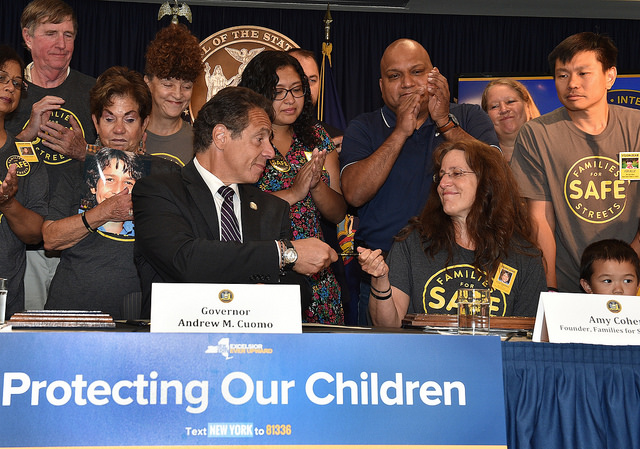Tens of thousands more reckless drivers are getting caught for speeding near schools, but they are also causing thousands fewer crashes — thanks not just to dozens of additional speed camera systems that have been deployed since this summer, but the expanded hours that the systems are operating.
On July 11, the Department of Transportation started expanding the life-saving school-zone camera program by installing 40 cameras across the city each month so the total number will rise from 140 to 750 camera systems by next June. But far more important, data show, was the expansion of the hours that the systems could operate — now from 6 a.m. to 10 p.m. instead of just during school hours.

As a result, there's been a sharp increase in the number of speeding tickets that have been issued — and drivers are clearly responding by slowing down: the number of crashes has been dropping as more cameras are turned on.
From July 11 through Oct. 11, there were 53,325 motor vehicle collisions throughout the five boroughs — 6,188, or 10.4 percent, fewer than the same time period in 2018.
At $50 a ticket for going more than 10 miles per hour over the speed limit, the city could rake in millions of dollars per month. But the speed cameras aren't about the money — they're about saving lives, and they've been doing just that, said a state lawmaker from Brooklyn whose bill gave the city the green light to install the additional 610 camera systems.
“Speed cameras work. Period. They change driver behavior and cause people to slow down, protecting New Yorkers from injury and death in traffic collisions,” State Senator Andrew Gounardes told Streetsblog.
Such a dramatic decrease in crashes is unprecedented in the so-called Vision Zero era. Indeed, total crashes in 2015 were 8.5 percent higher than the previous year. And in 2016, crashes again increased, this time by 4.3 percent, according to city data.
But more speed cameras have bucked that trend: During the first week of school in 2017, there were 5,432 crashes citywide. In 2018, there were slightly less with 5,362. But this year, after the expansion of the speed-camera program, there were 3,994 across the five boroughs — 26 percent fewer than 2017 and 25 percent fewer than last year.
And get this: when the school-zone cameras were turned off for roughly one month by the state legislature in July, 2018, there were 20,630 crashes during the period. But this summer, during the exact same period — when the cameras were not only back on, but starting to expand — there were 2,048 fewer crashes, a decline of almost 10 percent.
This was the program that the now-repudiated Senate Republicans declined to pass last year before they were thrown from power.






